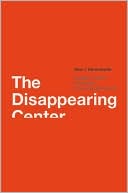The Disappearing Center: Engaged Citizens, Polarization, and American Democracy
Search in google:
Renowned political scientist Alan I. Abramowitz presents a groundbreaking argument that the most important divide in American politics is not between left and right but rather between citizens who are politically engaged and those who are not. It is the engaged members of the public, he argues, who most closely reflect the ideals of democratic citizenship—but this is also the group that is most polarized. Polarization at the highest levels of government, therefore, is not a sign of elites’ disconnection from the public but rather of their responsiveness to the more politically engaged parts of it. Though polarization is often assumed to be detrimental to democracy, Abramowitz concludes that by presenting voters with clear choices, polarization can serve to increase the public’s interest and participation in politics and strengthen electoral accountability. Publishers Weekly While many Americans worry over the rise of partisan politics, Emory University political science professor Abramowitz (Voice of the People) finds reason to celebrate: the increasing ideological divide, he argues, has engaged more people while making the stakes in elections more clear, resulting in dramatically higher voter turnout (the 2008 election had the highest turnout "in more than four decades") and a populace that's more politically involved-whether campaigning directly, speaking with friends, contributing money or simply putting up yard signs. Statistics show that the "proportion of pure independents in the electorate has been declining since 1970"; party loyalty today is based not on social group identification (as in FDR's "New Deal Coalition") but ideological beliefs, creating more disciplined Republican and Democratic voting blocs. Abramowitz admits that this can become paralyzing in U.S. democracy (as opposed to parliamentary democracies) when the executive and legislative branches are controlled by different parties, making bipartisan cooperation not just unlikely, but politically damaging, and giving those few moderates who remain outsized importance. Abramowitz bolsters his thought-provoking conclusions with 67 tables and charts. Copyright © Reed Business Information, a division of Reed Elsevier Inc. All rights reserved.
1 Polarization in the Age of Obama 12 The Engaged Public 153 Partisan-Ideological Polarization 344 Polarization and Social Groups 625 Polarization and Elections 846 Polarization in a Changing Electorate 1117 Polarization and Representation 1398 Polarization and Democratic Governance 158Notes 173Index 187








